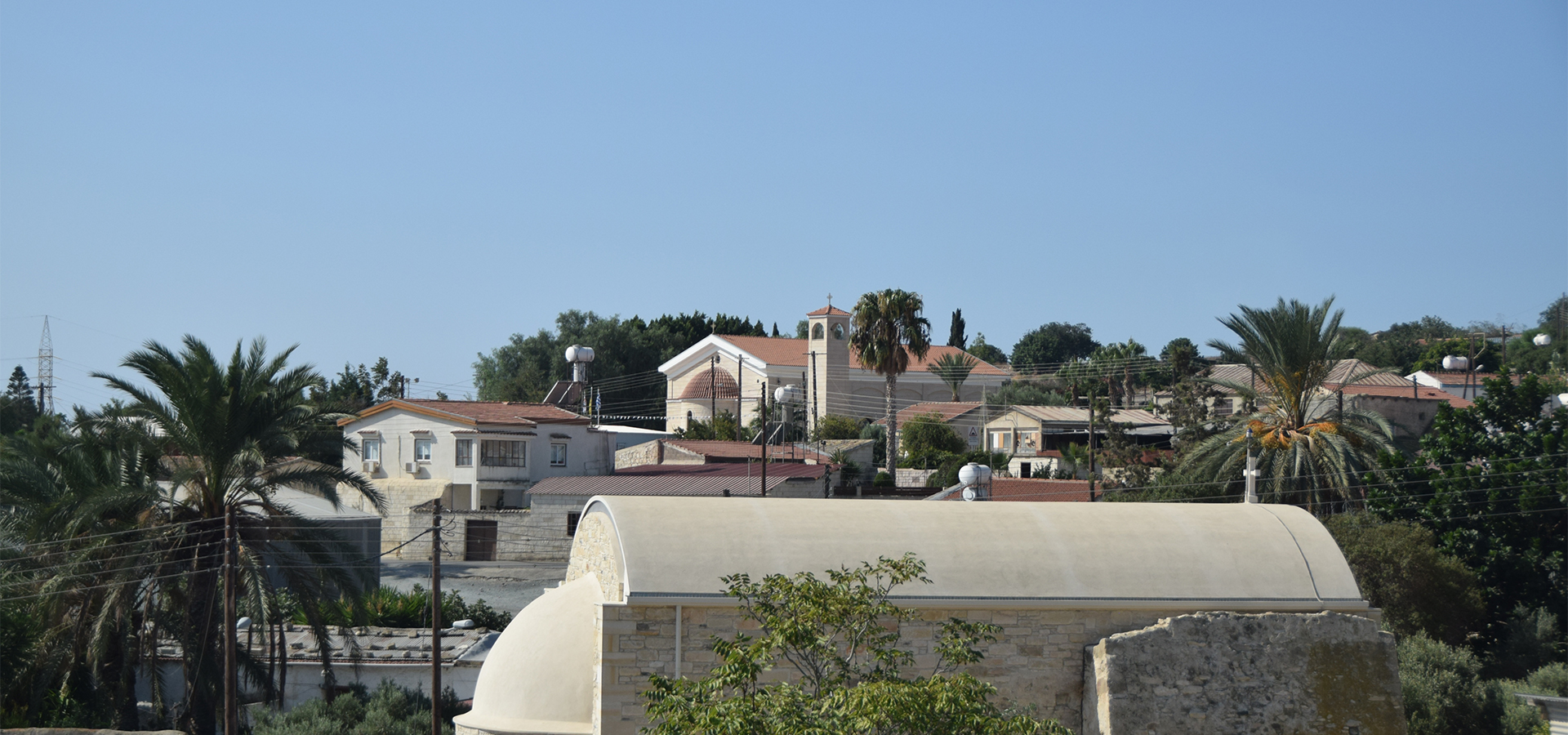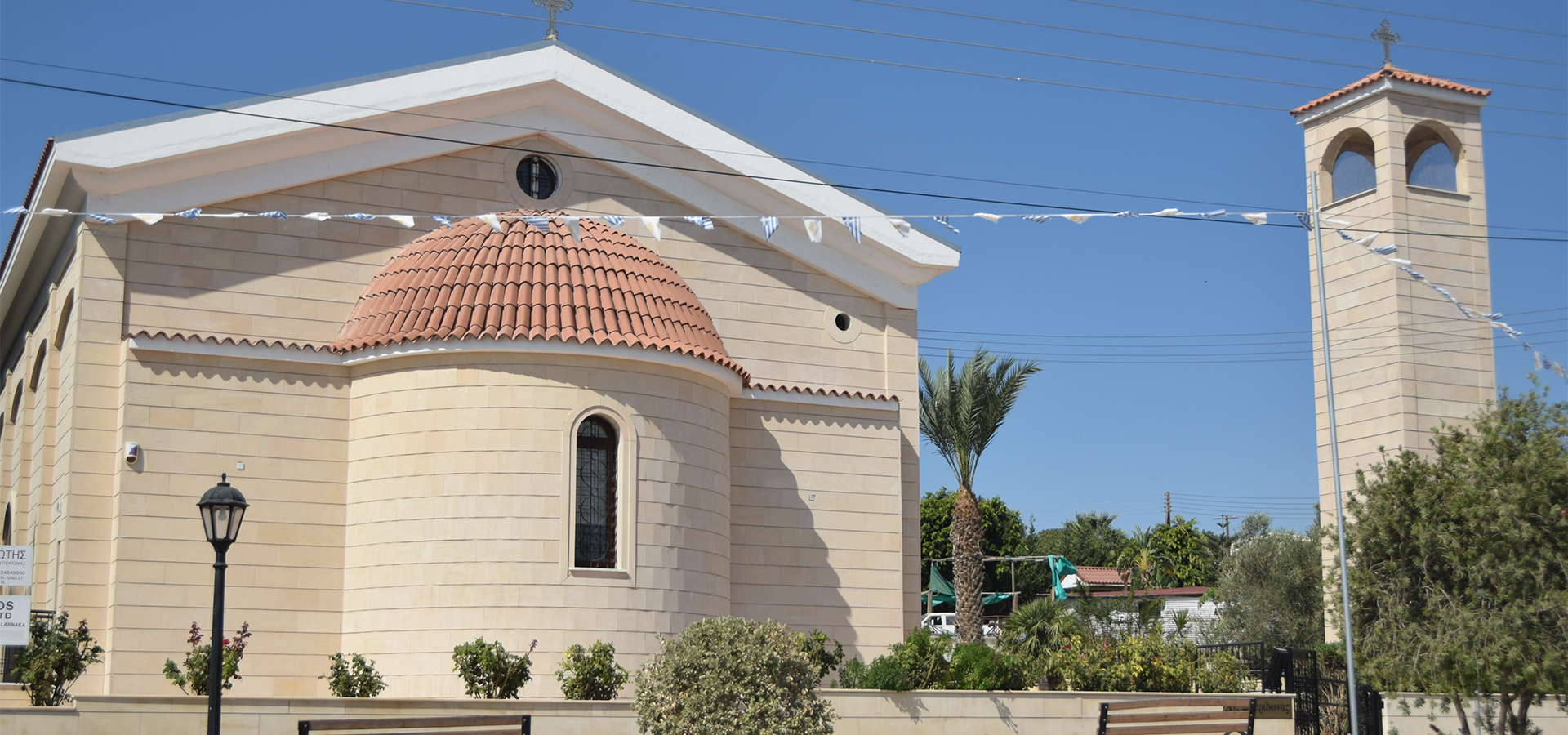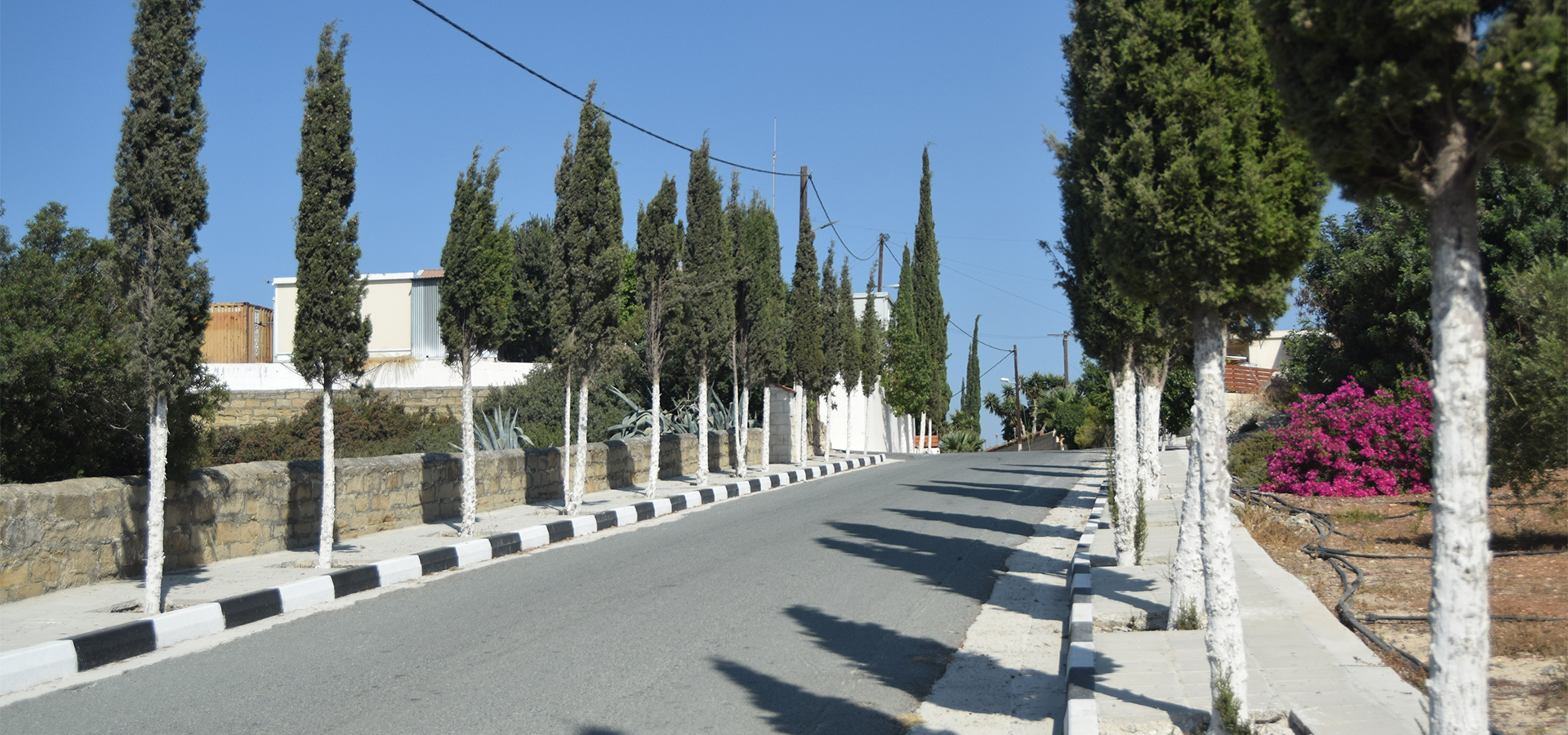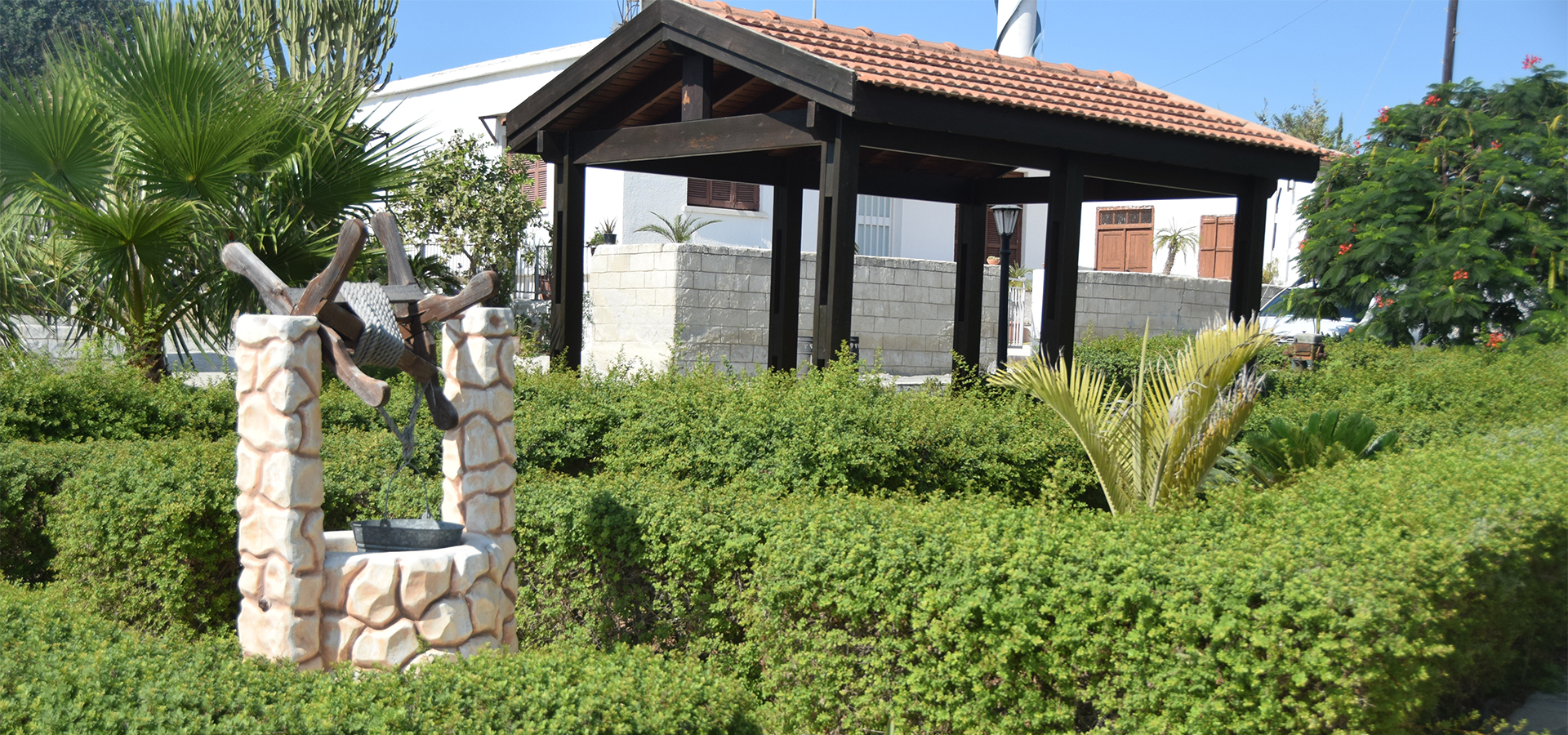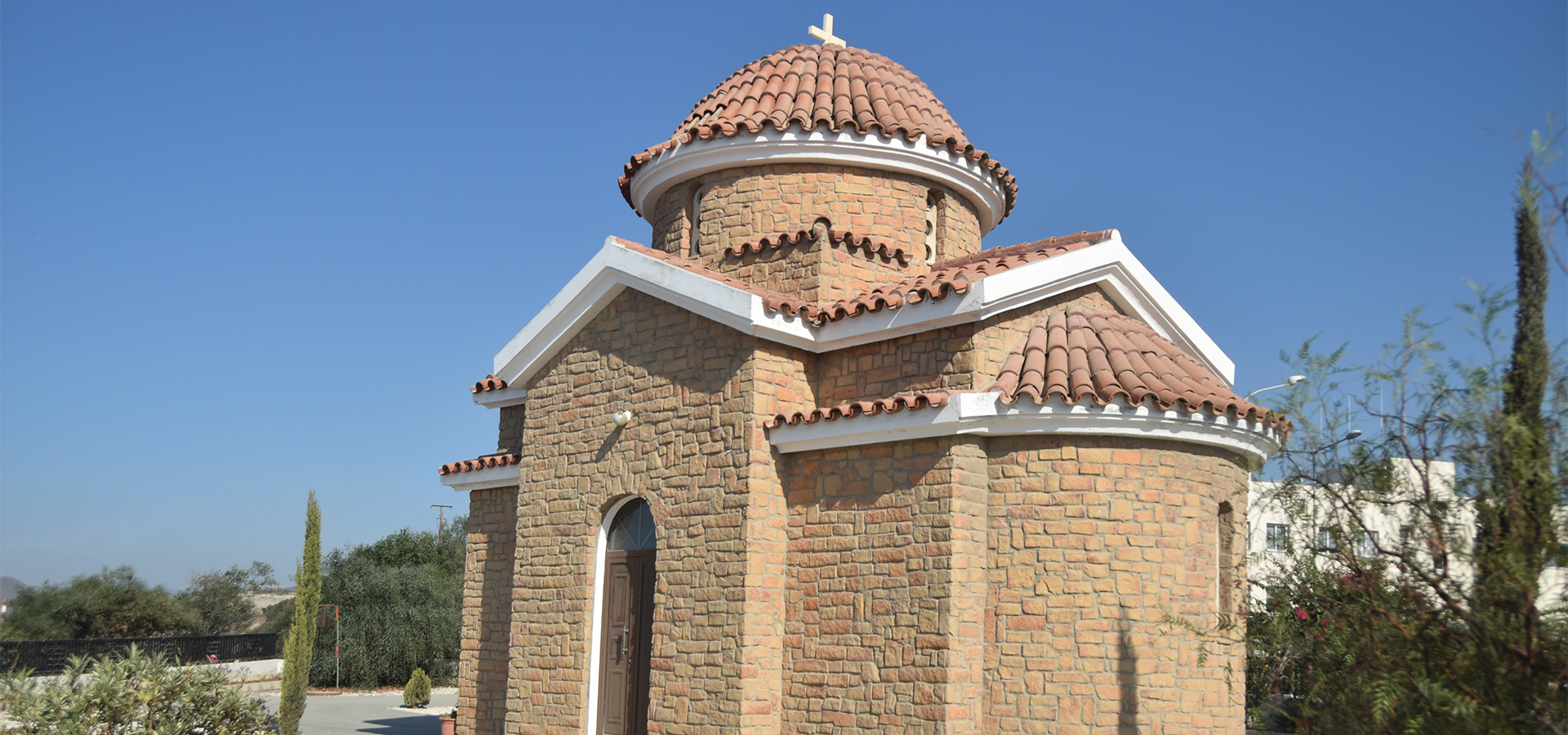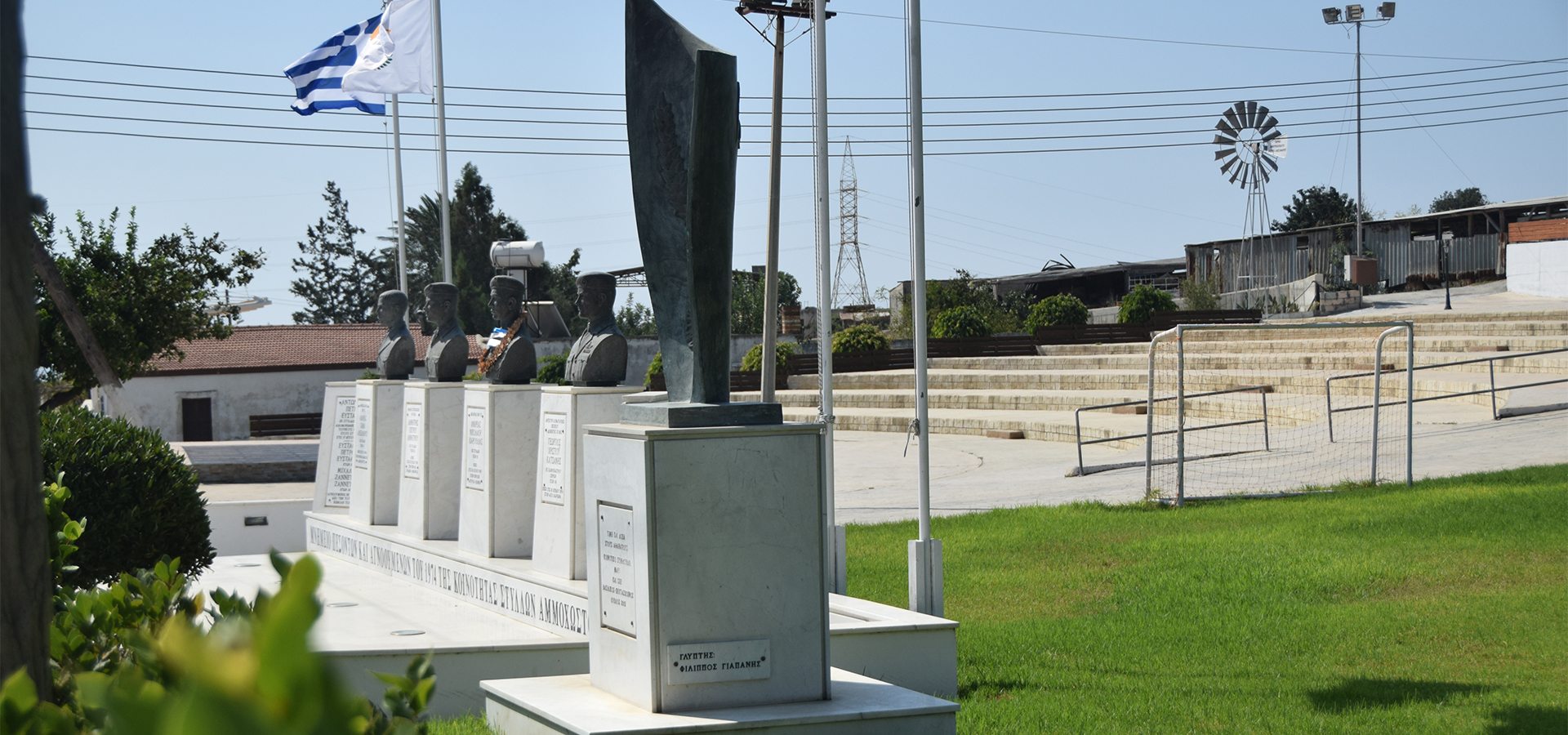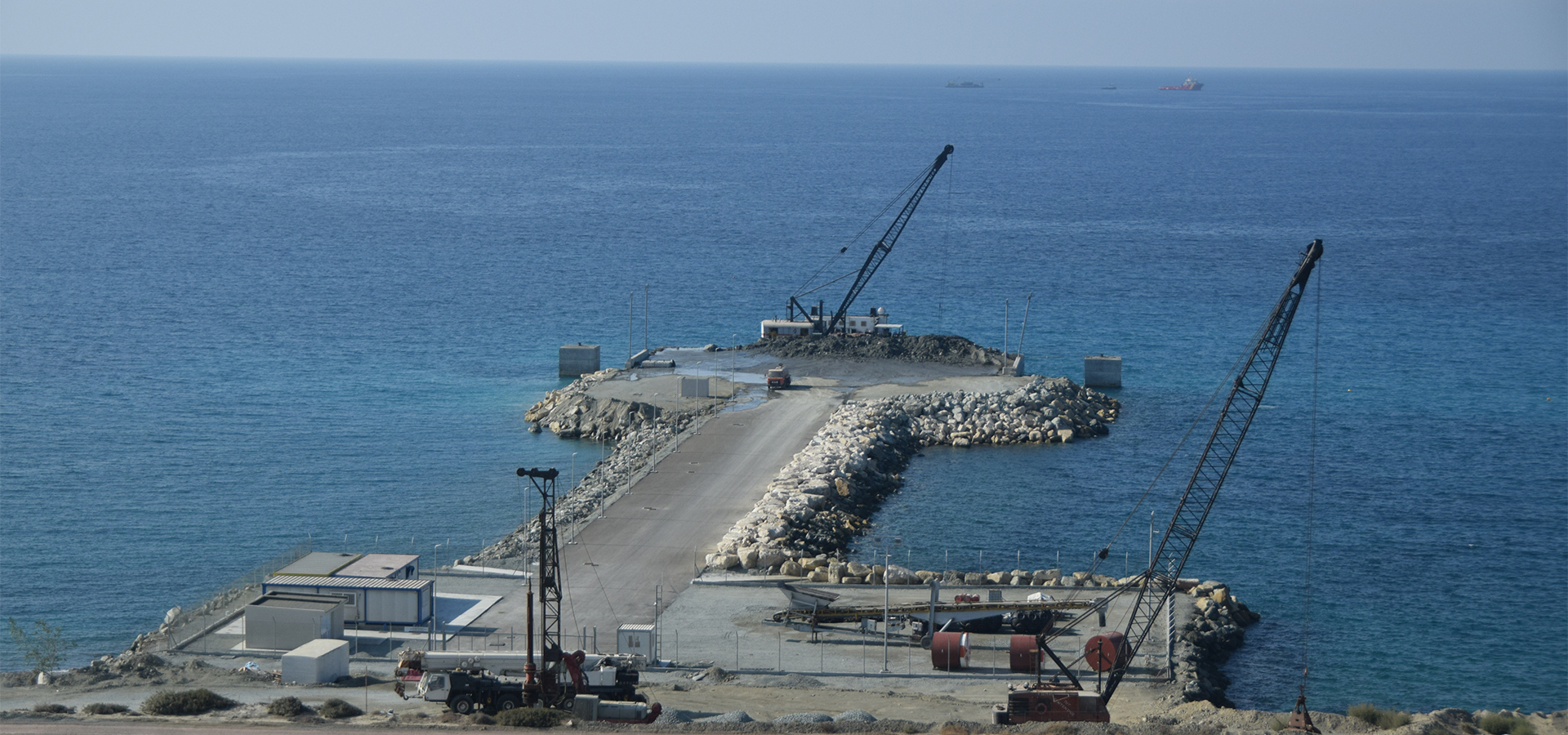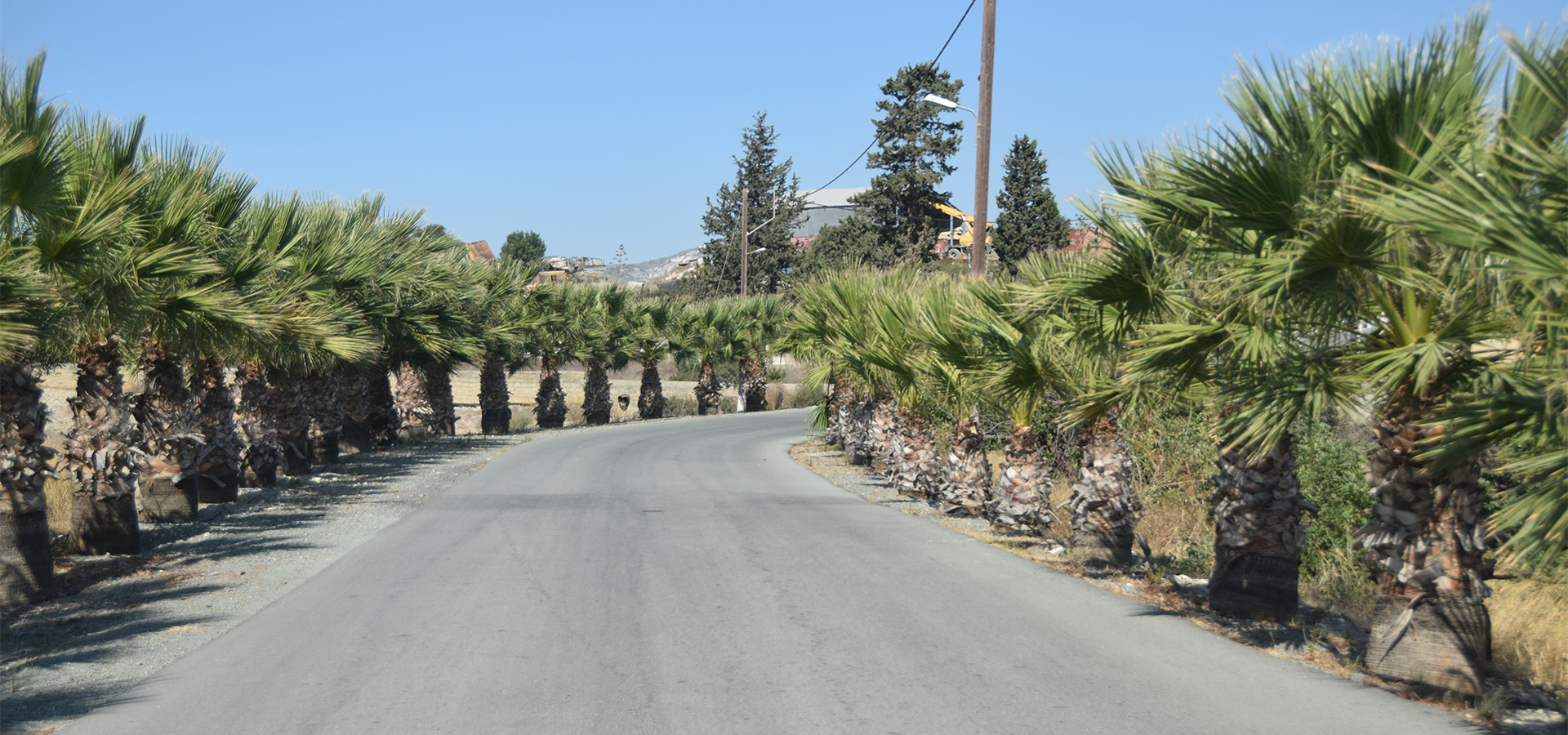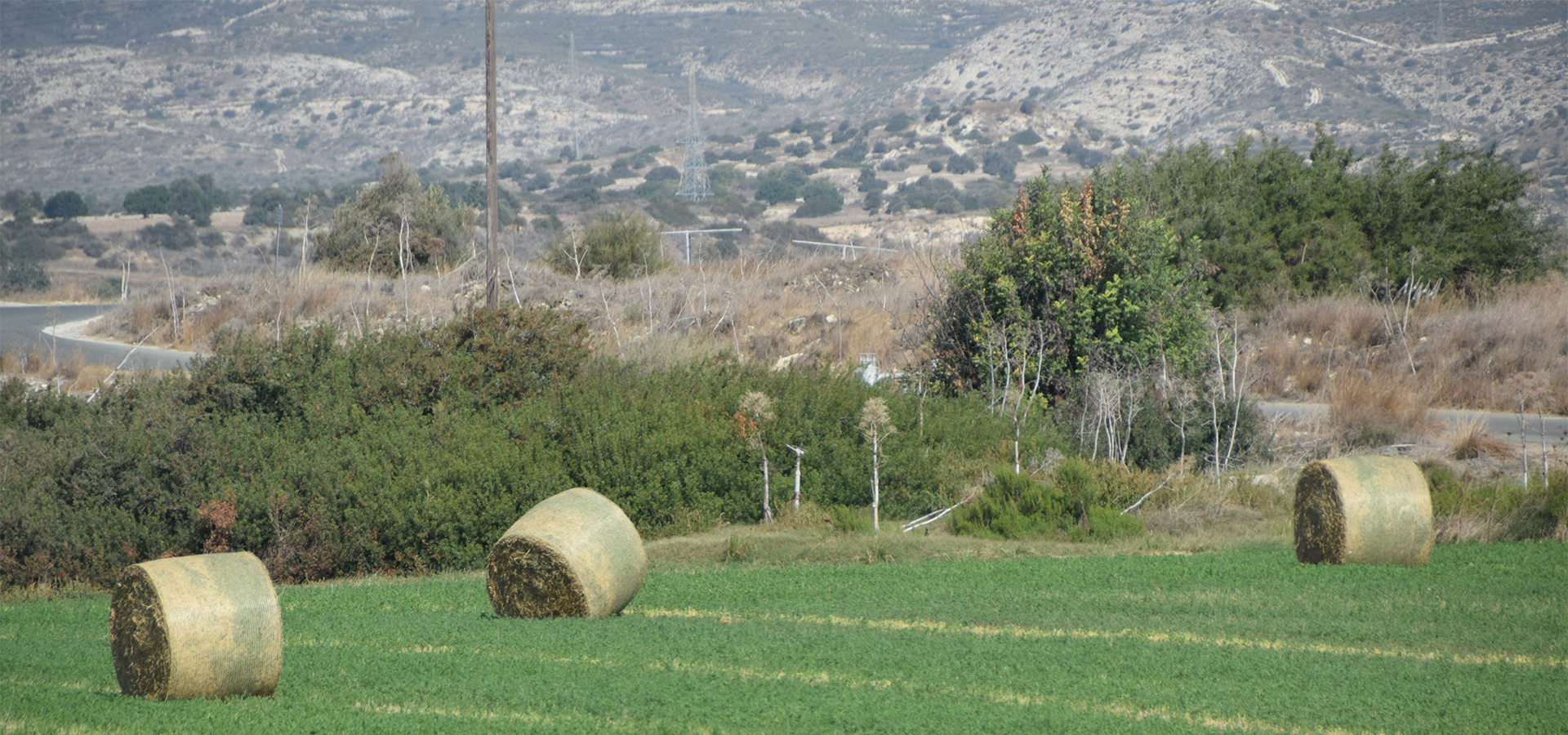History
The village of Mari lies 39 kilometres south-west of the city of Larnaca. It is built at an average altitude of 80 meters. East of the settlement flows the river Vasilikos.
The village existed under this name since Medieval times. It is found marked in old maps under the name Marin. De Masse Latri mentions it as a feud that was granted to noblemen by the King.
There are several interpretations for the name of the village. One version reports that it was the ancient village of Marion. This is rejected for the reason that the village Marion is in the vicinity of Polis Chrysochous. In the region of Mari, at the Mesovouni venue, there was an ancient settlement of the Iron Age. In 1881 a necropolis was found in the region the findings of which were sent to the British Museum. In 1893 another necropolis -of the Bronze Age -was discovered.
Near to the village lies the Neolithic settlement of “Tenta” while other archaeological sites exist in the area (Kalavasos, Khirokitia, Maroni).
Apart from the prehistoric settlements, traces of a Historical-era town were found in the area whilst in 1979 a tomb of the Archaic Cypriot times was found. Consequently the region was inhabited during Prehistoric and Historic times.
Another interpretation of the village’s name reports that it took it from “Agia Marina”. Indeed, the old church of the village was dedicated to St. Marina.
A third opinion considers that the village took its name from a certain Marini in the years of Frank domination.
The most exact viewpoint assumes that the village was inhabited before the Frank domination era and that during the period of the Byzantine Empire it was named Agia Marina. During the Frank domination period it was converted by the Franks to “Marin” and later on -translated to the Greek language -“Mari”.
The Turkish-Cypriot inhabitants of the village called it “Tatli Su”, which means “sweet water”. After the Turkish conquest of Cyprus the village was made Turkish. It remained Turkish until the 19th century and later on, because of the mines of the region that offered employment, it was inhabited by Greeks and became mixed.
According to the Chronicle of Leontios Machairas, St Helen disembarked in Cyprus in the village’s area. Due to this fact the river of the region was named Vasilopotamos (Royal River).
The village has undergone constant changes of its population. In 1881 the inhabitants of the village were 248, which increased to 270 in 1891 and to 298 in 1901. In 1911 the inhabitants increased to 367 and in 1921 to 436. We also had a new increase in 1931 with the inhabitants coming up to 444. In 1946 the population increased to 580 (542 Turkish-Cypriots and 38 Greek-Cypriots). In 1960 the inhabitants run up to 923. In 1973 964 Turkish-Cypriots inhabited the village. After the 1974 Turkish invasion in Cyprus, the Turkish-Cypriot inhabitants of the village were coerced by their leadership to abandon their village and to transfer, along with all the other Turkish-Cypriots of the non-occupied areas, for settlement in the occupied areas. Then reek-Cypriot refugees from the north occupied part of the island settled in Mari. These regions are: Kalograia of Keryneia, Agios Epiktitos, Klepini, Koutsoventis, Kalopsida, Pege, Exo Metochi, Galene, Kontea, Agia Triada, Famagusta, Argaki, Peristerona of Famagusta, Angastina, Prastio of Famagusta, Gypsou, Akanthou, Kapouti, Lysi, Milia, Davlos, Makrasyka, Stylloi, Zodia, and Acheritou. In 1976 the inhabitants of the community numbered 651, decreasing to 478 in 1982. In the 2001 census the inhabitants numbered 175.
Tour
The village of Mari emerges on the southeast of Larnaka district and stands at a distance of only 39 kilometers from the city of Larnaka. It is the last village of the district of Larnaka and is considered the natural border between the districts of Larnaka and Limassol. It is located southeast of the village of Kalavassos and east of Zygi
When visiting Mari you will meet many renovated houses and the Turkish-cypriot cemetery. Then the old primary school, which will be turned into a cultural centre, the agricultural museum and a workshop of agricultural art.
Walking through the village, you will come across the Mosque, which was deserted in 1974, when the Turkish-Cypriots inhabitants of the village had to be moved to the north and occupied part of the island.
What is extremely impressive is the Old Mansion with its great windows and the small balcony, all built in the traditional way and style. Today it is used as place for baking breads in the traditional way.
The chapel of Saint Marina follows, as it is considered to be of great historic value. It goes back to mediaeval times and this is the reason why the Community Council, in cooperation with the Antiquity Department will restore and reconstruct it.
Immediately after that, the visitor will be led to the centre of the community where the building of the Community Council and a small Grocery Store are found.
The village square and the Community Park are worth visiting. The monument dedicated to our missing Andreas Alexandrou (war 1974) is located within the park. One of the churches of the community built in the 20th century is set right next to the monument. It is dedicated to Saint Marina and Saint Spyridonas.
The small chapel dedicated to Saints Constantine and Eleni is found on the northeast of the community. This small wooden chapel was built on a small hill that overlooks the sea. The stock farming area is set one the same area, namely on the northeast part of the community.
Other sights worth seeing in the village are the Inn of Hadjiloizos and the old bridge right next to it. Both will be restored and their restoration will be funded by the Community Council and the Antiquity Department.
There are two ports in the village; a trade and a fishing port. The latter, undoubtedly adds a special character to the community. Many would say that the most beautiful part of the day is when all yawls enter the picturesque port.
Finally, it must be noted that during the journey through the village, one can see a combination of cultivated land alternating with hectares of wild vegetation.
Source:
Community Council
Projects
Completed
In the context of the Community Council’s efforts for improving the quality of living for the community’s inhabitants, until the day of returning to their occupied villages comes, has proceeded to the creation of several infrastructure projects and to the scheduling of others. Despite the great difficulties existing due to the fact that the community was a Turkish-Cypriot village and large ranges of land belong to our Turkish-Cypriot compatriots, the Community Council has already completed several projects.
- With the financial aid of the Vasiliko Cement Industry, the problem of water supply has been solved through the excavation of a new drill.
- The irrigation problem of the community has been solved through the supply of water by the Limassol-Amathus Sewerage Board.
- All the rural roads were paved with asphalt -up to the old Limassol-Nicosia highway. Also, part of the stockbreeding region, the road that leads from the old road to the Chemical Industries, the road from the Governor’s Beach flyover bridge to the country church of Agia Mavri (expenses paid by the Moni Cement Industry), and the road from the old slaughterhouse to the river Vasilopotamos were paved with asphalt.
- A community park has been created with the contribution of the Vasiliko Cement Industry, baring the name of the -missing -Second Lieutenant (reserves) Andreas Alexandrou.
- All the streets and plazas were cleaned.
- The decrepit houses were demolished.
- A regional dumping place was created, serving the mountainous and semi-mountainous regions of the Larnaca District.
- The plazas were planted with trees.
- The church was maintained and trees were planted in its precinct.
- A kiosk was constructed in the main square.
- Parapets were made and placed at dangerous points along the roads.
- Post office boxes were placed for the immediate service of the inhabitants.
- Excursions with visits to monasteries and Byzantine churches were organised for the elderly.
Scheduled
- Maintenance and reconditioning of the old primary school and its conversion to a cultural centre, an Agrarian Museum, and a workshop of Rural Craft.
- In collaboration with the Antiquities Department, the country church of Agia Marina will be re-erected, as well as the “Hadjisozos Chani” (caravanserai).
- Maintenance and reconditioning of the ancient bridge that stands next to the caravanserai.
- Creation of a new stockbreeding zone.
- Building of a new water supply reservoir.
- Repairing and maintaining the community offices.
- Creation of a branch-office of the Co-operative Credit Society of Tochni.
Cultural
The Community Council of Mari has paid great attention to the cultural matters of the community. It plays a leading role in organising the Cultural Festival that takes place -every year -on the 17th of July, honouring the memory of St. Marina. Cypriot dances, Greek and Foreign folk-dance groups, satire, poetry and rhyme recitals are presented in this Festival.
Every Easter Monday traditional games are organised at the church’s precinct and the community park. Free meals, drinks, and red Easter eggs are offered during Easter celebrations.
Every year the community council’s excursion to various monasteries and churches of Cyprus is organised. All the inhabitants of the community participate in this excursion.
The Community Council -in collaboration with the Blood Bank -organises blood donation events twice a year.
Every 14th of October, the global day for women farmers/grangers, the “Sunday of the Pastoral Woman”. The purpose of this event is for the younger generations to be acquainted with country life. The making of traditional foods like “halloumi”, bread, “soutzoukos” (must-jelly & nut sweet), and other tasty products is presented.
Traditional Arts
Pyrography
Wood sculpture
Village bread
Since ancient times bread was the primary feeding item. Today it still is -not only the most primary but also -the most tasty food. A large variety of breads are daily at the disposal of consumers.
However in Mari there’s the traditional bread that is made in the old, time-honoured way. It is the familiar country bread. The way it is made is exactly the same way our ancestors made it in various regions of the island.
A woman from Milia of Famagusta, Mrs. Christina Hadjoulla, continues -until today -making country bread in the same way her father, grandfather, and great-grandfather made it.
Way of making
The making of bread is done with yeast. Yeast is made during the Immersion of the Cross that occurs on the 14th of September. With this Holy Water and some flour part of the yeast is made. It stands covered for 3 days so that the “first fermentation” will take place. Afterwards some more Holy Water and some flour are added; all together are kneaded and after 3 days the same process takes place. So, after 9 days the yeast is ready. The yeast is renewed and maintained throughout the year.
The yeast is ready since night-time. The yeast must be thinned with some tepid water. Also, the yeast must be mixed with country flour, farina, water, and some salt until the dough becomes suitable. Then follows its cutting into pieces, weighing about 1 kilo, it gets floured (the “thkiartisma”, means “dough kneading”), and then it is placed upon the “kouposanido” (special, traditional, wooden utensil that is used for the making of bread), that is already covered with cloth. In every bowl of the “kouposanido” there is flour with black “mavrokokkos” seeds (aromatic seeds, cumin or dill). They are covered with a blanket for about three hours. The traditional oven is already prepared at the necessary temperature and then the breads -having been incised with a blade -are inserted in the oven with the help of the “fournofti” (long, wooden utensil with which the breads are placed in the oven), for baking that lasts for one hour. Afterwards the breads -again with the aid of the “fournofti” -are taken out of the oven and are ready for consumption.
Apart from regular bread, the brown bread, the rusks, the “glistarka” (crusty rusk with sesame, shaped like a rectangular grid), and church breads -for holidays and commemorations -are also made in the same way.
Traditional Halloumi
Because of the composition of the refugee’s community of Mari, the traditional recipes for making halloumi (type of cheese) come from the various regions in the occupied territory of Cyprus.
Halloumi is a traditional product of Cyprus and is made of goat & sheep milk.
The production occurs as follows:
The milk is heated at a low temperature inside a traditional “chartsi” (special large copper caldron) and then the “pithkia” (special powder for the milk to thicken) is added. After about an hour the milk will set and then follows the its cutting and collection in the “talaria” (special wicker-baskets). Pressing the halloumi with the hand follows so as to remove all the liquids from the material.
After the material is pressed, it is placed on the “tiroskamni” (traditional tool) and is cut into (approx.) 200 gr. pieces. The rest of the liquid that remained in the caldron is reheated at a high temperature thus producing “anare” (white soft cheese). Anare floats in the caldron and then it is picked and placed in the “kouroukla” special thin fabric) until it dries. Anare is eaten fresh, with honey or sugar. It is then cut in pieces, salted, and dried up in the sun so as to be used in the making of various other dishes as “trimma” (topping -like grated cheese).
The halloumi pieces are then placed back into the caldron, inside the “norros” (whey), and are heated over a low flame until they are cooked. The cooking procedure lasts for about 60 to 90 minutes during which the pieces of halloumi must be occasionally stirred with a special dipper. After being cooked they are again placed upon the “tiroskamni” (cheese maker’s stool) to cool down; afterwards they are salted and various aromatic elements -like mint -are added.
Then they are placed into glass or plastic vessels. After two days, the corresponding whey is poured into the vessels, having been salted. All of the whey that is left over becomes food for the swine.
In this manner the traditional Cypriot halloumi comes to your houses, offering its unique taste.
Agriculture / Livestock breeding
Ever since the old times the residents of the community of Mari have dealt with farming and livestock breeding. The Turkish Cypriot residents of the village also dealt with farming and livestock breeding. However, after the Turkish invasion of 1974 their leadership forced them to go and live in the occupied areas. In their place, Greek Cypriot refugees moved to the village and in turn made their living dealing with farming and livestock.
As far as farming is concerned, cultivated in the area of the community today are basic grains, plants used as feed for livestock such as corn (seasonal) and clover (perennial), as well as garden products such as potatoes, vegetables and melons. Today there are several greenhouse units operating in the area, while the cultivation of olive and carob trees also flourishes in the area.
Livestock breeding is also quite developed in the community, where there are three large modern cattle breeding units, as well as 15 sheep breeding units. These units produce milk which is distributed in the market either for the making of the traditional white cheese “halloumi” and the traditional yoghurt or for pasteurizing fresh milk. Also, they supply the market with fresh beef and sucker lamb.
Finally, ninety per cent of the community’s working population deals with farming and livestock breeding.
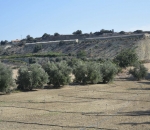
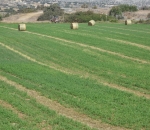
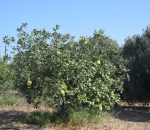
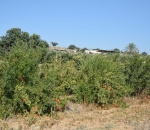
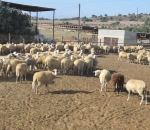
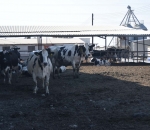
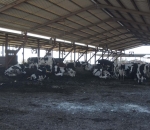
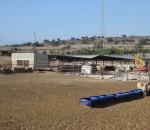
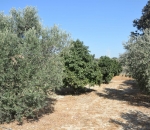
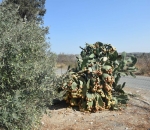
Toponyms
Many toponyms were saved in Mari. The names of these locations are either related to local traditions and myths or the morphology of the ground. A short list of the toponyms follows:
- Kolymbos
- Ammokremos
- Katsimo
- Koupetra
- Kafkalia
- Kapsalia
- Loura
- Patselia
- Psoumades
- Kapsalos
- Mazera
- Pharsounia
- Lefkarites
- Lakkos
- Vassili
- Kremos tou Sani
- Amaxiki
- Mavra
- Litharka
- Mersinouda
- Argaki tou Mavrou
- Merika
- Laxidkia tis Antonas
- Pamboula
- Mesokambos
Useful information

